
Akademiet andvender det samme udstyr og musik ved alle tests, såvel hardware som software, herved opnåes ensartede og sammenlignelige resultater.
Måleudstyr
Akademiet kan foretage følgende målinger:
Højttalere
Frekvensrespons Log.sine sweep
Impulsrespons (Cumulative spectrum - Waterfall)
Steprespons
Forvrængning
Fase
Vibrationsmåling
Impedansmåling
__________________________________________________________________________
Testmusik
Anmeldelser : Johannes Staberg
CD 1
1) Pop: Nonesuch 7559 - 79817: Joni Mitchell - Travelogue

6. Slouching towards Bethlehem. Skremmende dynamikk i stor orkestralt arrangert stykke musikk av og med Joni Mitchell. The Acid-test!
_________________________________
2, 3) Klassisk: Danacord 601: Shostakovich - Piano concertos 1 & 2, Oleg Marshev og Helsingborg Symfoniker / Hannu Lintu (dirigent)
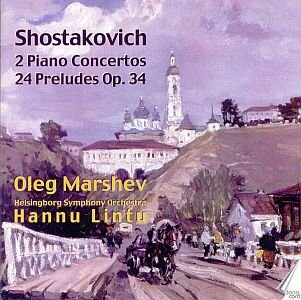
3,4 sats av konsert nr 1. Jeg er veldig glad i kontrastene som gjengis her; varme/kulde, lek/alvor, svakt/kraftig, langsomt/hurtig, ja alt er med! Fantastisk samspill mellom enkelte instrumentgrupper i orkesteret og solist som (i tillegg) får klaveret til at synge.
__________________________________
4,5,6) Klassisk: Arts 47564: Vivaldi - Concertos Op 8, Nos 1-6, Academia Bizantina / Ottavo
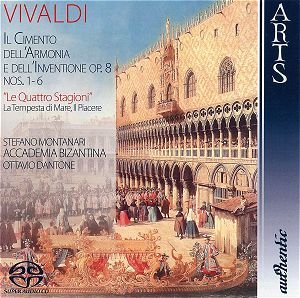
Dantone (Cond.) 10-12. Vinteren fra konsertserien "De 4 årstider". Denne kjenner vi, og dette er en heller frekk, distinkt, dynamisk "rett på sak"-innspiling, men med masser av dynamikk, flott klang og følelser i tillegg!
___________________________________
7) Klassisk: Sony 62691: Piano Transcriptions - Arcadi Volodos 9. Gavotte, fra Askepott av Prokofiev.
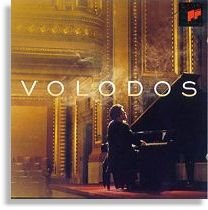
Et stykke som krever dansende fingerferdigheter og musikalsk teft. Ikke det mest krevende stykke på platen, men jeg liker det på grunn av de "skrå" akkorder, og fremdriften (uroen). Musikken på platen er av godt opptak men med lite romklang - flygelet taler direkte i stedet for.
___________________________________
8) Jazz: Proprius 7778: Jazz at the Pawnshop, Vol 1 3. High life.
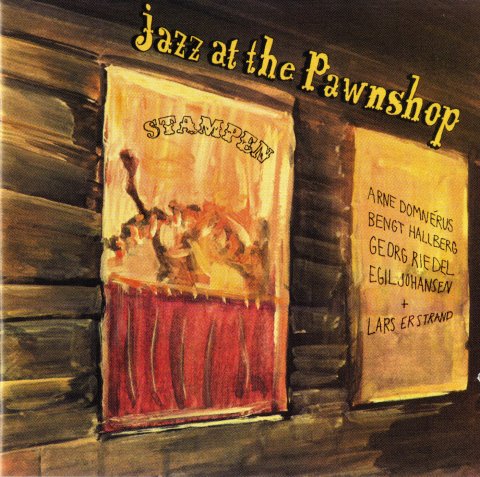
Dette er en klassiker, og de 3 første melodier er vel "brukt opp" etter hvert, men personlig blir jeg ikke lei "High life", med en annerledes eggende rytme og en fantastisk drive og lekenhet, fra de etter hånd voksne herrer på scenen!
____________________________________
9,10) Klassisk: MDG/Audiomax 706 1530: Die Orgeln in st Jakobi in Lübeck - Arvid Gast 11.

Fantasie, fra Fantasie und Fuge BWv 542 For orgel elskere og alle andre!
_____________________________________
11) Jazz: Blue Note 837183: Cassandra Wilson New moon daughter
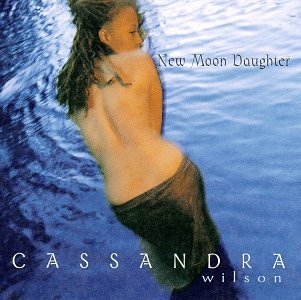
1) Strange fruit. En ubehagelig tekst og en flott fremføring av en spesiell stemme, hvor arrangement og sang går opp i en høyre enhet, og dette er bare et av mange gode eksempel på Cassandra Wilsons kunst!
_________________________________________________________________________
CD 2
1) Klassisk: Aeolus 10057: JS Bach - Harpsichord concertos, Vol 1 10. Allegro, fra It.
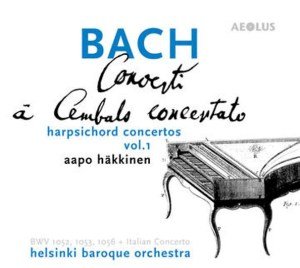
Konsert for solo cembalo, BWV 971. Den sprø klangen fra cembalo virker som gjennom en lupe i denne innspillingen. Romklangen som er markant forsterker resonansene og gjennom denne klinger de enkelte toner klart og rent.
__________________________________
2,3) Klassisk: Calliope 9340: Lamentations de Jeremie (Music for the Holy Week)
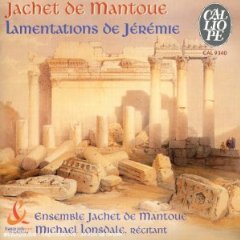
1,2 Tekst og sang. Taletydelighet, akustikk i en liten steinkirke. Sangen i en talende stemme og sangen fra en kvintett av mann stemmer. Tiden står stille et lite øyeblikk....
__________________________________
4) Pop: Private 261974: Jennifer Warnes - The hunter
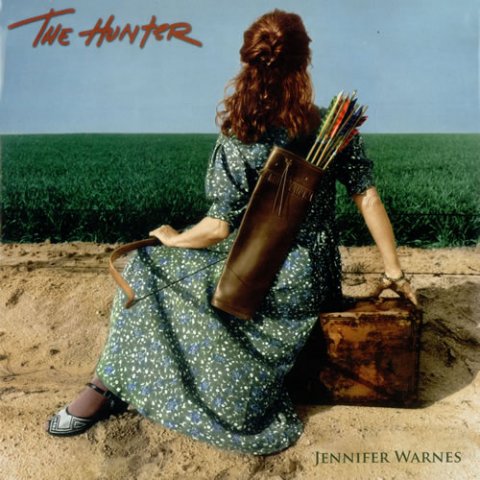
2) Somewhere, somebody, 8 Way Down deep. Musikk som klinger best på et anlegg som kan klare detaljer, og hele spekteret fra topp til bunn, og spesielt bunn. Bassgangen skal synge hele veien, og stemmen skal ha den helt rette soul følelsen når alt stemmer!
_________________________________
5) Klassisk: Glossa 80104: Visee - Pieces de theorbe ((lutt) 1. Prelude.

Et fantastisk streng instrument med klangfylde og resonanser. Flott spilt av Jose Miguel Moreno med distinkt attakk på strengene, idette heller rolige og korte stykke for lutt solo.
__________________________________
6) Klassisk : Aeolus, AE-10027: J W Hertel - Concerti, Sinfoniae, spillet av Main-Barockorchester Frankfurt.

1: 1.sats fra Sinfonia i A-dur, Allegro
En (noe) lys og åpen klang, og et uhyre detaljert lydbilde, fra et 12-13 mann stort barokk-orkester. Og de spiller med en force og en flyt /drive som er en fryd at lytte til!
__________________________________
7,8,9,10) Klassisk : BIS 999: Ilya Gringolts Plays Paganini
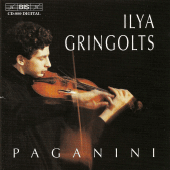
1-3, 5 Introduzione e variazioni sul tema "Nel cor piu non mi sento", from Paisiello's "La Molinara", for solo violin.
1: Introduzione, 2: Tema, 3: Variation 1, 5: Variation 3 Solo spill som man bare sitter og måper til når man hører det! Er det mulig?
Fantastisk klang i instrumentet - en Stradivarius violin fra 1737 - som spilles av et (den gang) kun 15 år gammelt "vidunderbarn"!
___________________________________
11) Jazz: Blue Note 522963: Patricia Barber - Companion
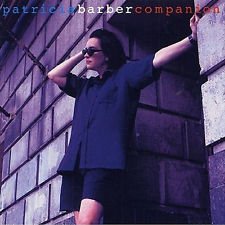
3) Like JT. Et flott live opptak fra en jazzklubb, hvor stemningen gradvis blir mere og mere ekstatisk.
___________________________________
12) Jazz : Enja, ENJ-9563: Renaud Garcia-Fons – Mediterranees
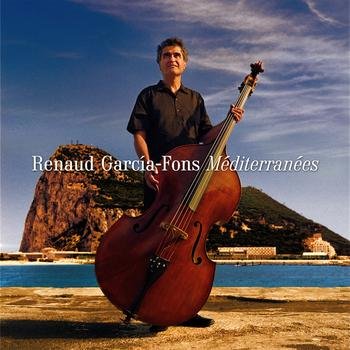
5: Las Ramblas
6 musikere spiller en komposisjon av bassisten Renaud Garcia-Fons, på instrumenter som en kan finne igjen i folkemusikken rundt middel-havet.
Musikken prøver gjengi nattstemningen på den kjente avenyen i Barcelona hvor alle nasjonaliteter møtes. Vi hører en livlig dans av rytmeinstrumenter før trekkspill og klarinett følger opp. Det spilles på "Zarb" (Persisk tromme), "Rik" (arabisk tamburine), "Darbouka" (stor timeglassformet tromme, vanlig i mellom østen), "Accordion" / trekkspill, "Flamenco gitar", "Bass" og "Klarinett".
______________________________
13) Pop: Geffen 24426: Rickie Lee Jones - Pop pop 7.

I'ii be seing you. Rickie 's nasale stemme og den vemodige stemningen setter standarden for dette flotte opptaket med sang og akustiske instrumenter.
______________________________________
14) Pop: WB 8122 79836: Rickie Lee Jones - Pirates
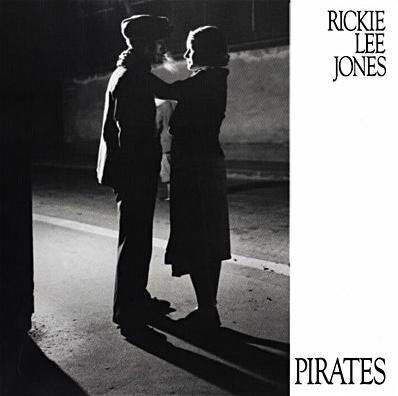
1. We belong together. Et av de beste dynamiske opptak fra Rickie's "gullalder". Kikktrommer, percussion og bass gir en fantastisk groove, og musikken lyder fresh den dag i dag. Det skal lyde lekent og lekkert!
________________________________________
15) Jazz: ACT 9715: Solveig Slettahjell - Silver
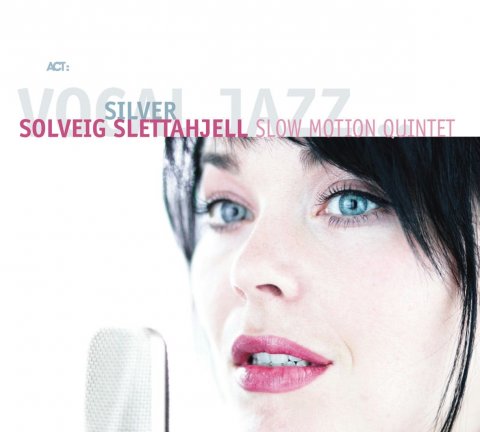
1) Take it With me. En Tom Waits sang med twist! Den rolige og stillferdige sangen har massevis av detaljer spesielt i percussion delen.
_________________________________
16) Pop: MCA 112 055: Steely Dan - Gaucho

1) Babylon Sisters. De herrer Fagen og Becker har tryllet frem mange flotte sanger i fantastiske arrangement, men det hele går opp i en høyere enhet på anlegg som kan gjengi fremdrift, rytme og timing på riktig måte. "Babylon Sisters" er et godt eksempel og en av mine personlige favoritter!
_________________________________________________________________________
CD 3
1) Klassisk: ECM2114: Beethoven - Piano konserter Nos 4 & 5, Till Felner, OSM, Nagano (dir)
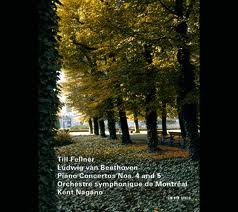
3.sats fra 4. pianokonsert. Syns at orkesterklangen på denne innspillingen er helt "konge". Et stort orkester med masse strykere som gir en varm klang og kroppslig nærvær og støtte til solisten Fellner på klaver.
____________________________________
2) Jazz: ECM 1892: Tord Gustavsen Trio - The Ground
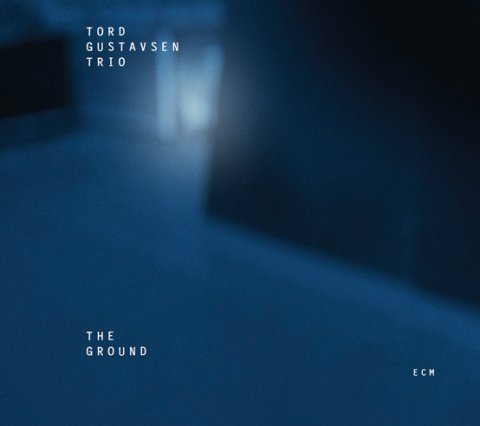
1) Tears transforming. Et stillferdig stykke (som det meste herr Gustavsen lager, men) som likevel har "alt", klang nerve, nærvær og dynamikk i et sedvanlig flott ECM opptak. Less is more!
__________________________________
3) Klassisk: Channel Classics 33412: Vivaldi - Concertos Op 9, HBS / Rachel Podger 10.
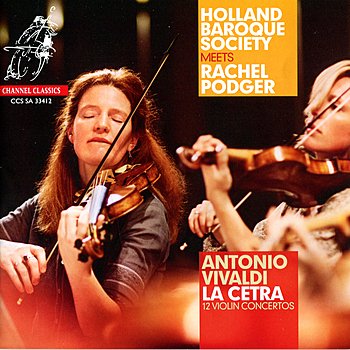
Konsert nr 4, 1 sats Allegro. Her er det kontraster mellom svake og starke partier som gir en herlig opplevelse av strykerklang og romklang i tillegg til den dynamiske overraskelsen.
_________________________________________________________________________
CD 4
Opus3
Philosophy
Discussions of sound nowadays tend to be very much preoccupied with the digital links of the sound reproduction chain, especially where gramophone recordings are concerned. Attention very often focuses exclusively on the type of A/D converter used, how many bits, the amount of oversampling, how the equipment is specially modified, and so on and so forth.
When Opus 3 started at the end of 1976, there was far more talk about the way in which the actual recording was done purely in terms of recording technique or philosophy - that is, the methodology employed (multi- mike versus twin microphone technique etc.) and the type of recording situation chosen - natural environments or traditional studio technique, and so on.
Whatever the technical apparatus, it is still the actual, recording philosophy that does most to decide what a recording will sound like - a fact which has been virtually lost sight of in the discussion of sound today. The quantity of electronics used in a recording is also highly important. In the type of mixer consoles commonly used in a studio nowadays, the acoustic signal passes through a very large number of amplifier stages - between thirty and forty or more is not unusual! The Opus 3 electronics, which are mainly tube-equipped and which we have partly developed ourselves, seldom include more than three of four amplifier stages between microphone and storage medium.
Opus 3's recording technique has been specially developed for acoustic music and is based on using the natural acoustics of authentic environments such as churches, concert halls, jazz clubs and so on. We match the venue to the music, so to speak, as opposed to the common studio practice of adding an artificial reverberation afterwards and so on. The positioning of the microphone in the recording room and the positioning of the musicians in relation to the microphone are also extremely important.
From the very outset we have used what is known as the coincident or X/Y recording technique, mainly employing the special configuration of crossed figure of eights, also known as the Blumlein technique, after Alan Dower Blumlein, the British radar engineer who developed the technique way back in 1934.
Depth of Image
So accustomed are we to three-dimensional vision, that we never really think about it. But we need only shut one eye for our judgment of distances to be reduced and our three-dimensional vision to disappear: we need both eyes and the relation between them in order for see three-dimensionally. Much the same is true of our hearing.
Our brain and auditory system "process" the sound-waves reaching each ear, with regard to level, direction, time and frequency content. The signal is further "analyzed" by our brain and auditory system, and the differences between signals coming from our two ears tell us, for example, about distance to the different sound sources and their relative positions. We experience "Depth of Image": for example, the different instruments of the orchestra in a concert hall are differently placed, not only from left to right but also in depth, together with the size and acoustics of the concert hall.
By "collecting" the total sound at one single point with a stereo microphone -that is,a microphone with its capsules as close together as possible -we obtain a strict relation between the direct sound and the reflected sound (the diffused sound field), and this gives our brain and auditory system important information for building up an illusion of "reality" - the concert hall, the church or the jazz club. It is also very important for the direct and the reflected sound to have an exact acoustic connection with the sound-waves from each instrument. In traditional recording studios, there is, basically, one microphone (or sometimes even more) per instrument, and these are then mixed together electrically. This is not real stereo, it is just panned mono.
Since, moreover, the microphones are usually placed veryclose to each instrument in an acoustically dead studio, all one gets is the direct sound of the instrument, and so artificial reverberation has to be "added on" electrically afterwards.
Timbre
By timbre we mean the specific character of an acoustic musical instrument - meaning, for example, what makes it possible for us to tell one instrument from another. The timbre of a musical instrument is a combination of its significant spectral distribution, i.e. the relation between notes and their harmonics and each relative level and frequency distribution, and last but not least, the way in which the sound-waves radiate from the body of the instrument.
All our acoustic instruments are designed to be played in some form of concert hall, i.e. in a place where you hear both the direct sound of the instrument and the reverberation of the environment. If, like Opus 3, you are aiming for as natural an instrumental timbre as possible, it is vitally important that acoustic instruments can also be recorded in the type of surroundings they were originally designed to be played in, but also with longer microphone distances, so as also to capture the sound radiating from the whole sounding body of the instrument. The short microphone distances normally used also make the timbre unnatural, and so it has to be "restored" artificially, using various equalizers etc. We mustn't forget that when our acoustic musical instruments were created, a long time ago, neither electricity, microphones or recording studios existed !
Dynamics
The dynamic range of a musical instrument is the difference between the loudest and the softest sound level it is capable of producing. Like timbre, the dynamics of a musical instrument depend, not only on how it is built but also on how it is used by the composer and performer. Dynamics in this sense are used to create a large number and variety of musical effects, changes of emotion, mood and expression etc., etc. The dynamic properties of a musical instrument are also very much affected by the way in which it is recorded. The short microphone distances used for multi-microphone recording in traditional studios also exaggerate the recorded dynamics. Just like timbre, the dynamic balance then has to be artificially "restored", using compressors, limiters and so on.
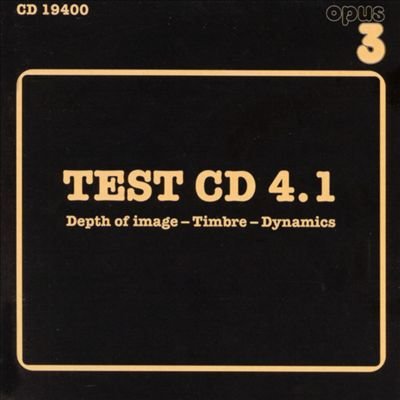
This test record from OPUS 3 contains a selecrion of"naturally recorded" acoustic music from earlier OPUS 3 releases. As with previous test records, it is inrended as a reference for evaluating a sound reproduction unit purporring to be "genuine" High Fideliry.
The selection provides new examples of three irnporrant subject fieids for sound experience: depth ofimage, timbre and dynamics.
Why has only acoustic music been included?
Recent developments in modem music have of course been increasingly dominated by rhe use of electronic instruments, synthesizers and sampled sounds, with a recording technique based on computers, sequencers, mulri-channel equipment and electronically generated or simulated acoustics. These soundsare recorded via CABLES, all elecrrically.
The sound pieture for this rype of music, being synthetically produced and not based on natural conditions, eannot readily be used in evaluating a Hi-Fi system, because there is no objecrive realiry onc can refer ro; the sound pierure is entirely rhe result of the subjective preferences of musicians, producer and technicians.
In a word, a Stradivarius played manually will always be a Stradivarius, but a triggered sample of "Space Shuttle String 8" can sound very different on differenr occasions!
Today especially, with so much music being recorded electronically, acoustic instruments - recorded narurally in authentic surroundings like concert halis, churches and so on - are an ourstandingly imporrant point of reference.

______________________________________
1. Allegro con spirito, from the Drottningholm Music (Roman) 2'16
From Omnibus Wind Ensemble, "From Mozart to Zappa", No. 9203
Just imagine being at a concert given by rwelve wind players in a big chureh!
That will be exactly your experience in rhis recording: a big, full-bodied and very open timbre with a clearly defined stereo image, from rhe flutes on the left to the bassoons on the right, but also wirh a pronounced perspective - we want you to hear just where the church walls are!
There is also anether way of"seeing" all this - wirh a visual metaphor.
Imagine we are looking at the players through a big pane of glass, representing the ENTlRE Hif system. The c1eaner and more polished rhis pane of glass is, the berrer we will be able to see rhe musicians - not only rhe instruments they are playing, but also where they are seated, both Iaterally and depthwisc.
The dirrier the window, the more restrietions there will be, in the form of ALL types of distortion occurring in a Hifi system, from CD player to loudspeakers, and the more difficulr ir will be to distinguish rhe instruments, both acoustically, as regards their positions in rhe sound picrure, and also as regards the rype of environrnenr in which the music is being performed.
2. Try a Little Tenderness (H. Woods-J. Campbell-R, Conally) 7'50
From The Johan Dielernan Trio, "Round Midnight", No. 19302
Now we rnove to a jazz c1ub, with the close and intimate sound you would have experienced if you had been there, listen to the piano, so openly well-defined and c1ear, you can almost see ir, and with the drumrner's brushes almost "whispering" in a near deprh ofimage just behind rhe piano. Notice the sofr, open sound of rhe cymbals when the drummer touches thern for various musical effects, rhyrhrn markings etc. Don't be surprised if you hear a "funny" noise every now and again - it's only rhe pianist humming along!
3. Allegretto con variazioni (Mozart, excerpt) 5'30
From Kjell Fageus and the Zetterqvist Quarter, "Mozart-Brahms", No. 19301
This recording was made in a concert hall wirh a slighdy shorter reverberation than for the first track.
In this specially wrirren piece the clarinettist perforrns on a basset c1arinet - an unusual instrument, about10 cm longer than an ordinary clariner and with a range extending four semitones further down the scale.
Note the full-bodied, dark timbre a little way into rhe piece, when the c1arinettist is playing the very lowest notes. The quite dynamic playing of the string quartet must on no account sound harsh and shrill but must have a brilliant, airy timbre.
4. Sonate, Finale: Vivo (Hagg) 5'40
From Stefan Lindgren, "Andersson-Lindegren-Hagg'', No. 19303
This expressive piano piece was recorded in a fairly small concert hall with a relatively moderate reverberation. The pianist's quite dynamic interpretation provides a first-rate example of the dynamics and power inherent in a concert grand, in the present instance a Steinway D.
The piano must not sound sharp and harsh, but ir can easily do so if the Hif system is incapable of reproducing the dynamics of the very deepest notes - a register which rhe composer has exploited to rhe full in rhis piece!
5. Circo della vita (Eje Thelin) 3'18
From Omnibus Wind Ensemble, "Viridiras per Omnibus", No. 19304
This lirtle jazz-inspired piece for large wind orchesrra was recorded in the same church as the first track.
Listen to the airy timbre of the rwo bassoons to the right of the sound image at the beginning, joined soon afterwards by the darinets a lirtle to the left. Note how, a lirtle later still, rhe bass darinet drops into a neat deprh of image with the double bass a lirrle to the right, a short way into the stereo image.
One further point. Due to rhe sparse character of rhis piece, the reverberation in rhe church is very dearly defined, something which merits special attention when comparing, say, CD players and DIA converters. Because the reverberation comes within rhe "micro detail range", i.e. starting from a fairly low level and descending to the very lowest level of a recording (i.e. the storage medium), the length of reverberation, i.e. the way in which the sound "fades" , makes an interesting parameter for critical evaluation of a Hifi system!
6. Played Twice (Monk) 5'24
From Joakim Milder, "Consensus", No. 9201
Something of the intimate atmosphere of a jazz dub has a1so been aimed for in this relatively modem jazz composition. Drums do not often sound as live as in this recording: even in the jazz context, we have grown accustorned to thern being given rhe same sound as in rock music. The double bass must be reproduced with great depth of tone bur must never sound blurred and "bumbly", instead ir must have quire an articulated timbre. Listen extra carefully in rhe middle, from the bass solo with rhe bass player and drummer playing themselves: the bass drum and double bass rnust on no account "merge",
7. Winin' Boy Blues (Morton) 4'28
From Tomas Ornberg's BLUE FIVE and Friends "Nobody's Blues bur Mine", No. 19102
The atmosphere of a slightly larger jazz dub than in the preceding track was judged appropriate for this rype of jazz music, a piece from the 1920s.
Norice how the cornet and soprano sax subdy blend with the acoustics of rhe recording environrnent, giving the instruments a warm, airy and big timbre.
Like the drums menricned in the previous piece, these instruments are often recorded with the microphone far too dose, which can very easily produce a sharp sound, ladung in overtones and a timbre with no dimension whatsoever.
8. SWEET GEORGIA BROWN (Bernie-Pickard-Casey) 4'33
From Lars Ersrrand Quartet, N o. 910 l
This rype of 1940s swing is cornpletely different from the 1920s jazz of the previous piece. Listen to the vibes, neady spread out berween the centre and right of the sound pieture - the Stereo separation must be distinctly audible sideways, as the vibe player works his way "along" the instrument. Listen to the drummer, who comes in a distinct perspective a lirde behind the others. Notice the very shimmering sound of the cymbals - it must be soft, airy and open, with no hint ofharshness.
9. Allegro di Molto (Mendelssohn) 1'53
From The Stockholm Guitar Quarter, "Brahms-Mendelssohn-Debussy", No. 9001
A big 12th cenrury stene church with quite a long reverberation was chosen for this recording by the Stockholm Guitar Quartet which, be ir nored, plays on four entirely different and differently runed instruments: soprano, aito, tenor and bass.
In spire of the fairly open sound image, the different voices of the four guitars, from the soprano on the left of the stereo image to the bass on the right, must be dearly audible. They must not on any account "merge" during the Iast-rnoving runs bur rnust be reproduced in a dearly defined position in the stereo image and wirh distinct arricularion!
10. CONCERTINO FOR CLARINET AND STRING ORCHESTRA 4'28
Homage a Mozarr (L-E Larsson) from "Clariner concerros, Mozart, Larsson etc.", No. 8801
The concert hall used for this recording has a much shorter reverberation, as befits a chamber orchesrra of 30 players. In the cadenza in rhe middle seerion of the piece, with rhe darinetisr quite unaccompanied, one gains a distinct impression of the size of rhe auditorium. The clarinet must have a airy, mellow sound and must on no account be "squeaky". The strings must be soft and open and absolutely not metallic.
11. STOMPING AT THE SAVOY (Sampson-Goodman) 4'01
From "Erstrand-Lind Quartet", No. 8603
In jazz music the dariner is meant to have a slighdy sharper timbre than in rhe dassical piece we have just listened to. This old jazz evergreen is played by the same forces as in Benny Goodman's quartet in 1937. This meanr there was no double bass. Insread the bass is now provided by the pianist's special left-hand playing together with the bass drum. The drums must be heard in a distincr perspective, slightly to the rear of the orhers. The same applies at the end of the piece, when the drummer hors up the tempo with rhe bass drum. In loudspeakers with, say, a resonant, exaggerated bass reproduction, the bass drum can very easily lose its position in the stereo perspective.
12. CONCERTINO FOR DOUBLE BASSAND STRING ORCHESTRA 4'45
Ballad: Moderato (L- E Larsson) from "Concerros for Double Bass and orchestra", No. 8502
This unusual piece was recorded in an old stene church with quite a long reverberation, which gives the strings and double bass a big, open, full-bodied sound. Listen particularly to the rollicking fullness of the double bass. Ir is important to keep this properly centred in rhe middle all the time, a little way into the sound pieture - any tendency towards non-lineariry in the bass register in rhe reproduction chain (e.g. loudspeakers) will result in rhe instrument "travelling" to and fro, depending on how rhe bass resonances are distributed in the spectrum. The strings must come in a distincr perspective slightly behind the double bass.
13. REUNION BLUES (M. Jackson) 4,50
From "Two sides ofLars Erstrand", No. 8302
In this rockJjazz-inspired piece there is a great deal of energy throughout rhe frequency spectrum.
The double bass must sound deep, dense and well-defined. The acoustics round rhe drums must be distinctly audible, together with the crisp sound of the hi-hat and cymbals. The tenor sax has a slightly round timbre and must not sound harsh. Listen to Knud [orgenssen's dynamic handling of the piano.
Observe particularly the way he hums the piano solo at the end of the piece! Finally, ir is important that the stereo perspective should also be clearly defined during rhe loud passages.
14. KONGEN (M. Lingedal) 4'32
From Knoa II "Inside out", No. 8016
In this highly unconventional piece, a very hard one to pigeon-hole srylistically, there are any amount of different things to listen for. The percussion section, which includes almost the whole works (xylophone, vibes, a1mglocken, temple blocks, warer chimes, drums etc.) provides a good sample of the great dynamic potential of acoustic instruments. The percussion, which is positioned behind the other instruments, must be audible in a distinct perspective, a little way inro the sound pieture. On a good system rhe positions of the various instruments are easily distinguished, both depthwise and sideways. A well-reproduced attack is very important in order for our brain/audirory system to build up a "faithful illusion" of the sound of an instrument and its positioning in rhe stereo perspective.
15. BLACK BEAUlY (Ellington) 4'30
From "Tomas Ornberg's BLUE FlVr, No. 8003
Notice how the double bass is played in the manner usual during the rwenties - the transient arrack when rhe string is struck is very hard to reproduce without making ir sound exaggeratedly hard and sharp.
The bass tone which then follows must have a deep, bass-like character, but still be controlled and steady.
Notice roo, just afrer the inrroduction, how the baritone sax neady falls inro perspective a little behind the other instruments.
16. HOUSE OF THE RISING SUN (Trad. arr. by Peters & Bibb) 6'10
From Cyndee Peters "Black is the Color", No. 7706
The large number of transient percussion instruments in this piece makes ir easy to place thern in deprh and sideways in the stereo picture, so rhar they very nearly encircle the vocalist. Notice too the way in which the sax player almost sreps in front of the others for his solo.
Right at the beginning of the piece there is a bell on rhe left and a cymbal on the right in the sound pierure. Listen to the brilliant but soft timbre of the attacks - ir rnust be light and airy and not the slightest bit sharp or harsh.
17. LOOK OVER YONDER (Trad. arr. by Eric Bibb) 2'47
From Eric Bibb "Rainbow People", No. 7703
Listen to the full, gende voice of the blues singer. This is a piece in which the natural dynamics of the human voice really come into rheir own.
The dynamic, transient sound of rhe conga drum activates the acoustics of the room, making the deprh of image very distinctly audible. The conga drum must have a deep, well-defined tone, without having to sound "boorny"
______________________________
Surround Sound on Opus 3
Acoustic music in authentic environments!
First it was Mono, and then came Stereo and now finally we have Surround Sound!
We at Opus 3 Records greeted the development of Surround Sound as an acknowledgement of the rightness of our original aims and ambitions since our inception in 1976…"To transfer and recreate the feeling and atmosphere that we felt at the moment of recording".
And when DSD (Direct Stream Digital) and SACD came along, we also found the perfect recording and storage medium for surround sound!
Since we invariably record in the venue where the performance is taking place we automatically capture and retain the authentic atmosphere and feeling at the moment of recording as opposed to most studio recordings which require the addition of sophisticated (though often very good) effects, such as reverb, echo etc to achieve this. These synthetic effects may be very good for some purposes, but they are not authentic. It’s a question of feeling, very difficult to describe in words, rather like trying to describe a Stradivarius compared to another very good violin.
The word HiFi can be interpreted in many different ways. We at Opus 3 Records have always considered it to be the natural sound of reality, with good Depth of Image, Timbre and Dynamics – or as the world renowned HiFi manufacturer Quad put it:
"The closest approach to the original sound".
With Stereo reproduction you are looking into the place where the musicians are playing, but with Surround Sound, if your system is correctly set up, you can be there with them. However this can be carried out in many different ways, depending on what "acoustic information" you want to transfer to the listener. You can be with the orchestra or seated in the audience, the choice is made at the time of recording.
Normally we at Opus 3 would not want, for example, to put the listener in the middle of the orchestra where the human psyche in the form of ear-brain relationships resents sharp sounds behind the head.
Ideally our main aim is to imbue to the listener the feeling that he or she is there, in the same room as the musicians, whether it be a Concert hall, Church, or your favourite seat (near the bar) in your Blues or Jazz club. Again this atmosphere or feeling of the venue is an integral part of the recording, each one is different, but never the less it is there and captured on Opus 3 recordings. This is our main priority to capture the performance with the ambience and acoustics of the venue at the moment of recording.
All you have to do is close your eyes and let the walls of the listening room disappear while you are transported to your own personal heaven. (No cover charge or waiting at the door).
























